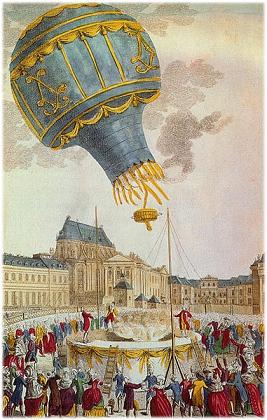We all are enthusiasts when it comes to knowing history. Right from our childhood balloons have been a favorite buddy. How do balloons fly? What happens when we make giant balloons, do we fly along? If we tie as many balloons to the house, does it shoot up into the sky as we’ve seen in the movie, ‘ Up’? Come on my dear explorer!! Reading glasses on for we are about to dive in deep into the history of ballooning.


The theory behind the romantic hot air balloons


Many many years ago people flew balloons filled with gas and hot air. Chinese traditions go hand in hand with hot air lanterns. They have become a part of their culture. During the three kingdoms era in Chinese history, these lanterns were used for signaling. Big brain time, isn’t it? Yet, there isn’t significant proof and archeological shreds of evidence to prove manned as well as unmanned flight before this. The Mongolians learned the art and science of lanterns and used them in the Battle of Legnica. This was the first time the history of ballooning was exposed to the western world.
Let me take you on time travel. Now imagine that we are in the Portuguese court of King John V, on 8 August 1709, in Lisbon. Right before us, we have Bartolomeu de Gusmão who is a famous priest waiting to present his demonstration. He takes this small balloon made up of paper, that looks similar to a lantern. He does his magic and fills it with hot air and lets it into the air. The balloon goes high up to 4 meters in the air. Thunders of applause everywhere. The king congratulates him. He claims that he has made a prototype of a flying bird named Passarola. He promises to fly himself from Saint George Castle in Lisbon and land a kilometer away. Do you observe the pin-drop silence in the court?
Now back here, but the evidence isn’t strong enough to prove this flight occurred and the exact distance covered is uncertain.
Let’s read our Criss Cross Tamizh’s latest history-related blog:
Evergreen hydrogen balloons – History of ballooning
Jacques Charles believed that hydrogen can lift an air balloon. He designed the balloon, and the Robert brothers constructed a lightweight, airtight gas bag. A 35-cubic-meter sphere balloon was made out of rubberized silk. The balloon was about 13 feet in diameter. The balloon was filled with hydrogen gas in the city of lights. The hydrogen gas kept cooling down and filling the balloon was a tedious process. With Benjamin Franklin as one among the audience, the balloon flew for 45 minutes and landed 21 kilometers away. Hence, came the invention of hot air balloon travel.
The man flying along with the balloon!
Brothers Joseph-Michel and Jacques-Etienne Montgolfier in Annonay, France have recorded an instance of humans flying along with the balloon. When their unmanned balloons became a huge success they started testing their hands-on balloons that could carry humans.
The people from Britain and Ireland were curious about the new invention. They started testing it and commercialized them. The use of hot air balloons expanded into the military community. They were used for spying and attacking purposes. During World War II, London was overflowing with a barrage of hot air balloons. Nowadays, they have become an adventure sport for travelers.
Hope this article made you wear your thinking caps and reading glasses. The era of inventory of life in the air is still in progress. Hope you enjoyed this fun fact time about the history of ballooning. It’s time for more exploration! For more information on aviation and related stuff do check out our blog page at Criss Cross Tamizh. Until then, bye fella explorer!!
Let’s read our Criss Cross Tamizh’s latest history-related blog:
History of aviation – Is it really a breakthrough? How has aviation transformed our mortal lives?
